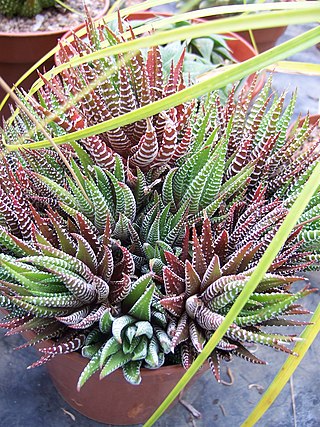
The pygmy killer whale is a poorly known and rarely seen oceanic dolphin. It is the only species in the genus Feresa. It derives its common name from sharing some physical characteristics with the orca, also known as the killer whale. It is the smallest cetacean species that has the word "whale" in its common name. Although the species has been known to be extremely aggressive in captivity, this aggressive behavior has not been observed in the wild.

The knobcone pine, Pinus attenuata, is a tree that grows in mild climates on poor soils. It ranges from the mountains of southern Oregon to Baja California with the greatest concentration in northern California and the Oregon-California border.

Buprestidae is a family of beetles known as jewel beetles or metallic wood-boring beetles because of their glossy iridescent colors. Larvae of this family are known as flatheaded borers. The family is among the largest of the beetles, with some 15,500 species known in 775 genera. In addition, almost 100 fossil species have been described.

Agave attenuata, commonly called the foxtail or lion's tailagave or the swan's neck agave, is a species of flowering plant in the family Asparagaceae. Sometimes called the soft-leaf or soft-leaved agave, the aforementioned animal-related names are a nod to the appearance of the plant's inflorescence, which—after years, generally—rises slightly before gravity brings it back down, giving the bloom a curved, "swan"-like or "foxtail" look. The species' specific manner of flowering is unique in the genus Agave as most other species produce a towering, vertical display, reminiscent of a miniature tree.

Banksia attenuata, commonly known as the candlestick banksia, slender banksia, or biara to the Noongar people, is a species of plant in the family Proteaceae. Commonly a tree, it reaches 10 m (33 ft) high, but it is often a shrub in drier areas 0.4 to 2 m high. It has long, narrow, serrated leaves and bright yellow inflorescences, or flower spikes, held above the foliage, which appear in spring and summer. The flower spikes age to grey and swell with the development of the woody follicles. The candlestick banksia is found across much of the southwest of Western Australia, from north of Kalbarri National Park down to Cape Leeuwin and across to Fitzgerald River National Park.

Nicotiana attenuata is a species of wild tobacco known by the common name coyote tobacco. It is native to western North America from British Columbia to Texas and northern Mexico, where it grows in many types of habitat. It is a glandular and sparsely hairy annual herb exceeding a meter in maximum height. The leaf blades may be 10 centimetres (4 in) long, the lower ones oval and the upper narrower in shape, and are borne on petioles. The inflorescence bears several flowers with pinkish or greenish white tubular throats 2 to 3 centimetres long, their bases enclosed in pointed sepals. The flower face has five mostly white lobes. The fruit is a capsule about 1 centimetre long.

Psiloptera is a genus of beetles in the family Buprestidae, containing the following species:
Neocollyris attenuata is a species in the tiger beetle family Cicindelidae. It was described by Redtenbacher in 1848.

Haworthiopsis attenuata, formerly Haworthia attenuata, commonly known as zebra haworthia, is a small species of succulent plant from the Eastern Cape Province, South Africa. As an ornamental, it is one of the most commonly cultivated of the Haworthiopsis species.
Eupalessa attenuata is a species of beetle in the family Cerambycidae, and the only species in the genus Eupalessa. It was described by James Thomson in 1868. The genus was originally known as Eupales, named by Dillon and Dillon in 1946; however, this name was preoccupied by the leaf beetle genus EupalesLefèvre, 1885, so it was renamed to Eupalessa by Miguel A. Monné in 2005.

Dicercini is a tribe of metallic wood-boring beetles in the family Buprestidae. There are more than 30 genera and over 750 described species in Dicercini.

Trirhabda is a genus of skeletonizing leaf beetles in the family Chrysomelidae. There are more than 30 described species in Trirhabda. They are found in North America and Mexico.
Crocidema is a genus of broad-nosed weevils in the beetle family Curculionidae. There are about six described species in Crocidema.
Trirhabda attenuata is a species of skeletonizing leaf beetle in the family Chrysomelidae. It is found in North America.

Phenolia is a genus of sap-feeding beetles in the family Nitidulidae. There are about nine described species in Phenolia.
Trichotheca is a genus of leaf beetles in the subfamily Eumolpinae. It is distributed in South Asia, Southeast Asia and Southern China.
Calyptocephala attenuata is a species of tortoise beetle in the genus Calyptocephala.
Regimbartia attenuata, commonly known as Japanese water scavenger beetle, is a species of water scavenger beetle widely distributed in the Old World, from northern Australia and Japan westward to the countries of Arabian Peninsula, including Oman and Yemen. It is the only species of the genus occurring in the Arabian Peninsula.
The Neotropical tortoise beetle tribe Spilophorini comprises two genera, Calyptocephala Chevrolat, 1836 and Spilophora Boheman, 1850. Biological information is limited but the life cycle includes six larval instars and the larvae construct a shield of their cast skins.

Rhipicera is a genus of beetle belonging to the family Rhipiceridae. The larvae are parasitoids of cicadas.












